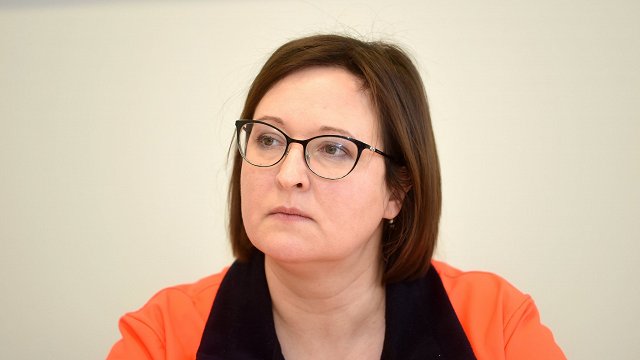As if to underline the ongoing disagreement between the hospital and the builder, one expert team has been invited by the hospital, the other by the builder LLC Velve.
Stradiņš hospital's new basement, where operating rooms will be located, grew mold last autumn. Then construction work did not take place at the site for a long time and moisture accumulated. All areas affected by the mold have now been completely removed or disinfected. Mold was also one of the reasons why the builder - the company Velve - lost the trust of the hospital board and the ambitious contract was terminated.
LTV had the opportunity to view the eight thousand square meters of the newly built basement. That's where the mold was so found after the long construction downtime. It's dry and warm at the moment.
The mold found in the basement has been destroyed in various ways, both by sawing the plaster and by treating the rooms with chlorine. The whole plaster has been removed, with metal profiles remaining and the letters P marking the locations where the mold was visible.
One of the labs that analyzed the samples taken in the cellar is “BIOR.” "I shall begin with a simple explanation: molds are everywhere, outdoors, on our clothes, on our equipment. [Mold is] an absolutely normal part of our environment,” said Olga Valciņa, director of BIOR.
Mold can also be found in the air in construction objects. But if it becomes visible, there are mold colonies. That's what was evident in the hospital's basement in the fall. BIOR explained that for the mold to multiply like that, it needed moisture and time. It would not have multiplied if the structure had been built without interruption.
“We've found mold in some places in minimum quantities. Admittedly, what we've found is mold of several species, up to 20 colonies on the surface. In a conventional market, in any non-sterile environment, there would be just as much. The problem is different – we cannot estimate how much has gone inside [the structure] because we can only test the surface, ” Valciņa said.
While mold is everywhere in the environment, in large amounts it is dangerous for patients, especially with weakened immune systems.
The hospital builder stressed that every effort had been made to address any concerns about the presence of mold. Experts also concede that replicate samples are unlikely to find mold spores.
“The historical extent of the problems has long been eliminated. That was last November. Tests have now been carried out in laboratories which have found that there is no more mold present there. There might be a bit in the air. But it's normal. It is also here in the air,” said Valdis Koks, a representative of builders and project director.
“The result we have received recently still confirms that the mold is. We have brought in an international lab that will be there soon. So we have another opinion,” Stradins Hospital Board Chairman Lauris Vidzis said in turn.
As a result, laboratory experts invited by both the hospital and the builder are coming next week, this time from abroad. They will take samples and say whether or not there is mold in the place where the operating rooms will be located.



























